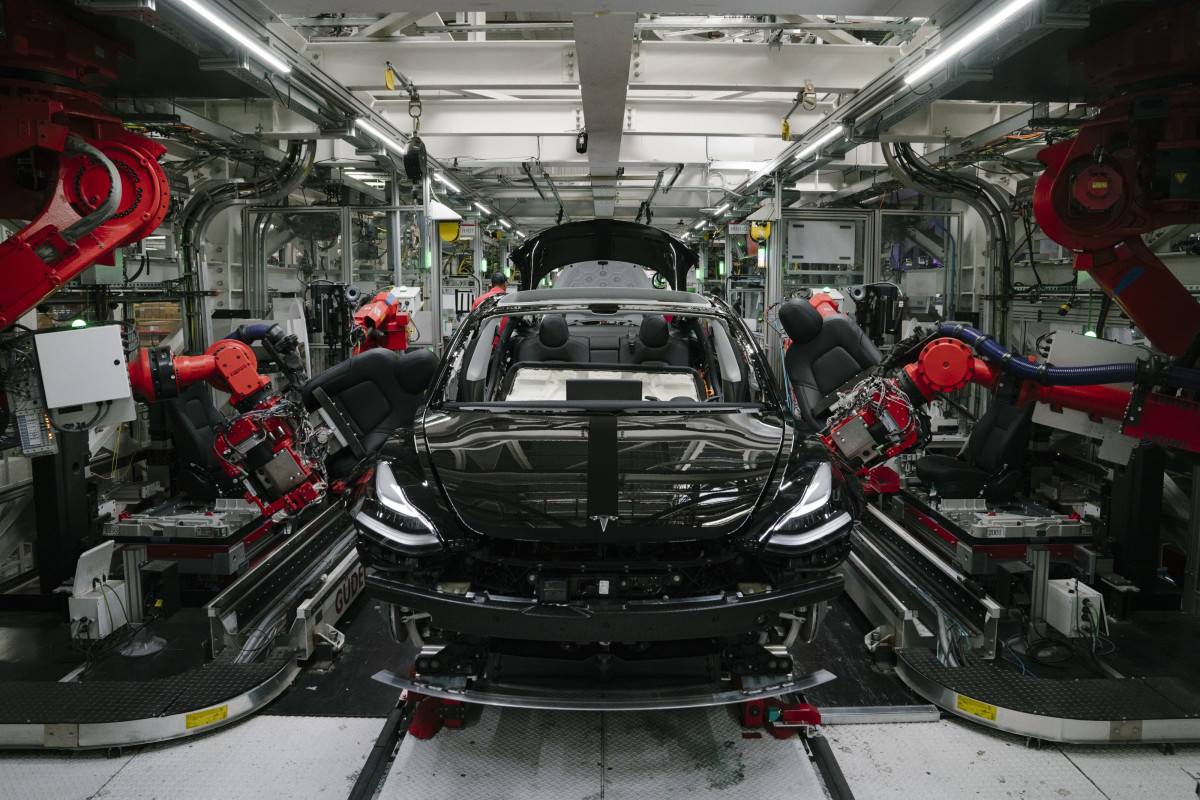
The electric vehicle narrative of late has been a simple one of slowing demand and cooling interest.
Hertz is slowing the electrification of its rental fleets, citing rising costs and poor resale value. General Motors GM has scrapped EV plans, pushed back EV production targets and postponed the production of its coming EV lineup. Ford F, after its EV sector lost $1.3 billion in the third quarter, said it is delaying up to $12 billion in EV investments.
Toyota TM, meanwhile is pointing toward the value of hybrids in the present climate even as Tesla TSLA remains engaged in a price-slashing effort to entice new consumers.
Related: Ex-Ford CEO warns of fierce challenge ahead for electric vehicles
Despite these cautious indications across the auto sector, several bullish Tesla investors remain unconvinced.
Citing a recent chart by EV-Volumes, Gary Black, managing partner of the Future Fund, said Nov. 8 that "global EV adoption continues to increase," hitting a record 11.8% in the third-quarter of the year, above the 10.7% it hit in the previous quarter. Black expects EV adoption to hit 13% in the fourth quarter of 2023.
Let’s start by setting the EV market scene. Contrary to what the finance media wants you to believe, EV adoption is soaring 📈
— Ramy (@TeslaXplored) November 8, 2023
There’s no slowing down. EVs are not a fad. EVs didn’t peak! Non of that is true.
Global BEV Adoption is at an all time high of 11.8% in Q3 2023. pic.twitter.com/j8uk8N9NAc
The chart, which has been circulating on X, shows EVs as a percentage of global light vehicles. EV sales, according to Cox Automotive, made up 7.9% of total industry sales in the third quarter, a record and increase both quarter-to-quarter and year-over-year.
As of mid-October, total EV sales year-to-date have surpassed 873,000, putting the sector on track to pass one million sales for the year, a record high, according to Cox.
A look at different data
Despite the fact that adoption is steadily increasing, EV demand is cooling off, something that is highlighted by the activities of the traditional automakers.
Recent data from S&P Global Mobility supports the cooling of demand for the growing sector.
S&P found that, in 2019, only 58% of respondents were open to purchasing an EV. By 2021, that number had jumped to 86% of respondents. As of May 2023, however, that number fell to 67%, indicating a reduction in growth, not an erasure of growth.
Brian Rhodes, director of connected car and vehicle experience for S&P Global Mobility, said in the report that the transition to an EV necessitates several routine changes that are likely making customers reluctant to switch.
"For those considering an EV as their primary car, the range/charging issues are amplified since there is no alternative on longer trips," Rhodes said.
The biggest factor behind the cooling demand in the market, however, is not range or charging anxiety, according to the data. That main factor remains price.

Just under 50% of respondents in a recent S&P survey consider EV prices too high, even considering the significant price cuts that the market has experienced in recent months.
"Pricing is still very much the biggest barrier to electric vehicles," Yanina Mills, senior technical research analyst at S&P Global Mobility, said, citing the immaturity of the sector.
And with charging a significant concern among potential adopters, the current lack of widespread infrastructure remains a hindrance to mass adoption, and a contributing factor to that cooling interest.
"Multiple hurdles need to be cleared to achieve widespread EV adoption," S&P wrote in its report. "Buyers may want to wait for the next technological advance, or have concerns about charging time and charger availability, but in the end, consumer finances - not engineering - lead the current buying resistance to EVs."
Electrification, as former Ford CEO Mark Fields has often said, is still undoubtedly where the auto market is headed.
Noting that automakers are not giving up their EV plans, simply postponing them, he noted recently that the transition in propulsion systems "is going to be inexorable."
It's just a transition that will likely, in the face of cooling interest, "take longer than everybody expected," according to Fields.
Related: Driverless car company explains urgent reason it ceased operating
The slowdown is an opportunity for Tesla
While Deepwater's Gene Munster believes that traditional auto's pullback in EV investments will enhance their profits over the next few years, he noted Nov. 9 that it will likely make their eventual transition to EVs "more costly."
If the mass transition to EVs doesn't take place until the 2050s, Munster wrote, then the current pullback would make sense. If it happens, however, in the next five to 10 years, the current approach will give "Tesla a greater lead," making it more "difficult for traditional carmakers to build a profitable EV business."
The industry's slowdown in its approach to EVs gives Tesla, according to Munster, a "window to advance while others are stationary."
If the EV sector either heats up, or isn't actually as cool as it seems, Tesla could further grow its market share over the next few years, making it even more difficult for other automakers to compete.
"The recent pause in large carmakers producing EVs is testimony that they’re in a catch-22," Munster said. "If they want to compete in EVs, they need to reach volume production. If they want to reach volume production, they need to lower prices to win share. If they lower prices, they lose more money, which makes it more difficult to pursue an all-EV future."
Tesla shares, following a bearish rating from HSBC, fell more than 5% Nov. 9.
Related: Key investor highlights the start of a positive trend for Tesla's stock
Action Alerts PLUS offers expert portfolio guidance to help you make informed investing decisions. Sign up now.







